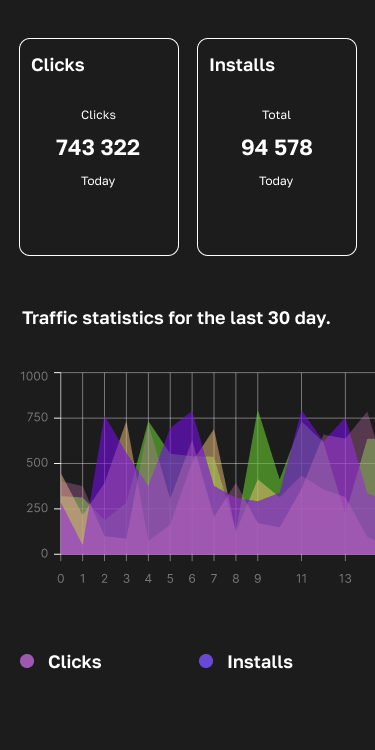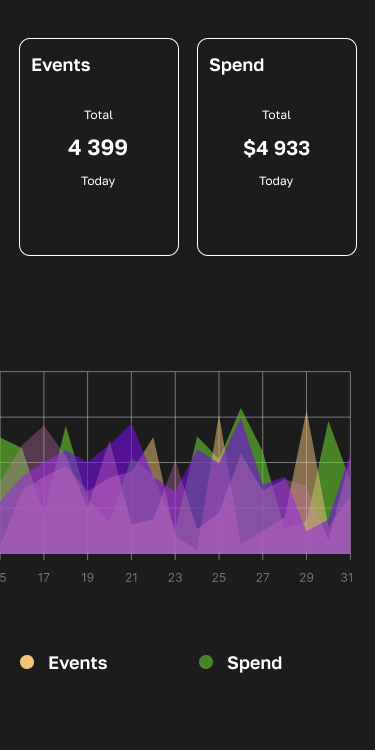Payback is a timing problem, not a channel ideology. If your CAC lands earlier in the user’s device life and your first-session task is completed faster, the math tilts your way, even if CPI isn’t the absolute lowest. Preloads and store-adjacent placements exist precisely at those “right-time” moments.
What we mean by “preload” and “post-install”, and why intent matters
Preload/on-device covers dynamic or negotiated placements on Android devices: OOBE/setup flows, OEM app stores (e.g., GetApps), smart folders, and carrier/OEM discovery. Users are literally in “install mode,” which is why vendors and MMPs highlight better down-funnel outcomes and falling conversion friction (AppsFlyer reports +15.8% YoY growth in preload conversions; multiple guides cite lower uninstall for preloaded apps). Post-install UA is everything else: social/search/display that sends people to a store page. In feed-based buying you can scale fast, but you pay higher CPMs and compete with softer intent.
On-device supply has also grown healthier: Digital Turbine’s On-Device Solutions rose 18% YoY in Q1 FY26, signaling both demand and footprint across OEM/carrier rails, important for dependable reach and predictable CAC.
The payback equation you can reuse
Shorter payback happens when (CAC) falls and early revenue signals (trial starts, KYC/funding, day-1 IAP/ads ARPDAU) happen faster. Preloads help on both sides: they reduce wasted clicks and shorten ad → install → first open. Some OEM stacks even let you optimize to retention or in-app events directly (e.g., Xiaomi’s D1-retention optimization), tightening the feedback loop for value-based bidding.
Social: usually slower payback on preloads, faster on post-install, unless you sell utility
Pure social relies on network effects and ad revenue latency. Post-install SRNs (Meta, TikTok) still tend to hit volume + viral spillover fastest, and their in-channel algorithms are excellent at finding high-LTV cohorts, despite higher CPIs. Preloads can help social-utility hybrids (photo tools, creators’ aides) because the first action is immediate; but for “feed-time” apps, payback is often shorter via SRNs where the algorithm optimizes for engagement events you monetize later. Calibrate spend by CPE (engaged open) and D7 ROAS rather than chasing the lowest CPI. (Directional guidance; payback advantage here is context-dependent). For stability and scale of OEM reach backing this test, note the sustained growth of on-device platforms.
Utilities: preloads usually win on payback
Scanning, cleaning, VPN, battery/backup, single-task value thrives when users are setting up a phone. OEM guides and industry write-ups consistently point to fewer uninstalls and stronger early retention for preloaded utilities; Xiaomi even exposes post-link retention optimization to steer spend to stickier placements. Faster time-to-first-value means trials and subscriptions trigger sooner, shrinking payback windows versus post-install feeds that must manufacture intent. Anchor to CPO (task completion) or trial start as your north-star metric.
Fintech: preloads can cut payback if you compress KYC – funding
Fintech payback hinges on KYC completion and first funding. OEM lanes can reduce bounce by landing users from store/setup straight into a guided onboarding, while partners in the OEM ecosystem report higher retention for preloaded apps in finance as well. Pair on-device with resume-task deep links and measure Cost per KYC and Cost per Funded Account; teams often observe fewer “what is this?” opens than in feed-based traffic, which improves step-through and shortens payback. Maintain holdouts to confirm lift and LTV quality by country.
Games: preloads pay back faster when genre fit is strong; post-install wins for event-driven bursts
Gaming is split. On-device dynamic installs can convert at 25%+ when matching genre to device cohorts, which accelerates payback for casual/mid-core titles with strong day-1 monetization or ad-ARPDAU. For event launches and deep-funnel whales, post-install UA across SRNs still shines because algorithms can chase payer-lookalikes at scale. Many publishers now run both: preloads for steady, efficient base and post-install spikes for events/LiveOps, then compare DO-ROAS and D7 payer rate side by side.
When the channel itself improves payback: proof points and platform shifts
On-device is not theoretical. Public results show ODS revenue and profitability rising, implying healthier auctions and supply, while OEM stores like Xiaomi let advertisers optimize toward D1 retention, removing guesswork from early cohort quality. AppsFlyer’s 2025 guidance quantifies that preload conversions are up YoY, consistent with the idea that meeting users earlier increases downstream efficiency. Use these rails to bid to value (CPE/CPO/D7 ROAS), not just CPI.
How to choose by vertical and signal, not by opinion
If your first meaningful action happens in minutes (scan a doc, toggle a VPN, complete KYC, finish a level), preload/on-device tends to shorten payback because users are primed and the path is short. If your revenue depends on longer engagement arcs or social graphs, post-install SRNs often fund payback faster via algorithmic audience finding – especially around events. In every case, normalize on time-aligned metrics (Cost per Engaged Open, Cost per KYC/Funded, D1/D7 retention, D7 ROAS) and run geo/PSA holdouts so you’re comparing incremental dollars to incremental returns.
Practical guardrails that keep payback honest
Wire your OEM partners in the MMP with post-install event postbacks and enable any retention optimization features they expose (e.g., Xiaomi D1 optimization). Keep creatives “resume-task” so first opens jump straight into the promised action. Track uninstall rate next to retention to catch cheap volume that doesn’t stick. And remember the market context: on-device rail providers are expanding with improving unit economics, which usually correlates with more stable pricing over the quarter.
Preloads shorten payback when your product’s first value is immediate and your funnel is simple (utilities, many fintech flows, and the right game genres). Post-install UA pays back faster when algorithms can exploit richer intent signals at scale (social feeds, event-driven gaming). The winning 2025 plan isn’t either/or: use preloads to anchor efficient base cohorts and use post-install to surge into high-LTV pockets, all measured on value-based KPIs and incrementality.










